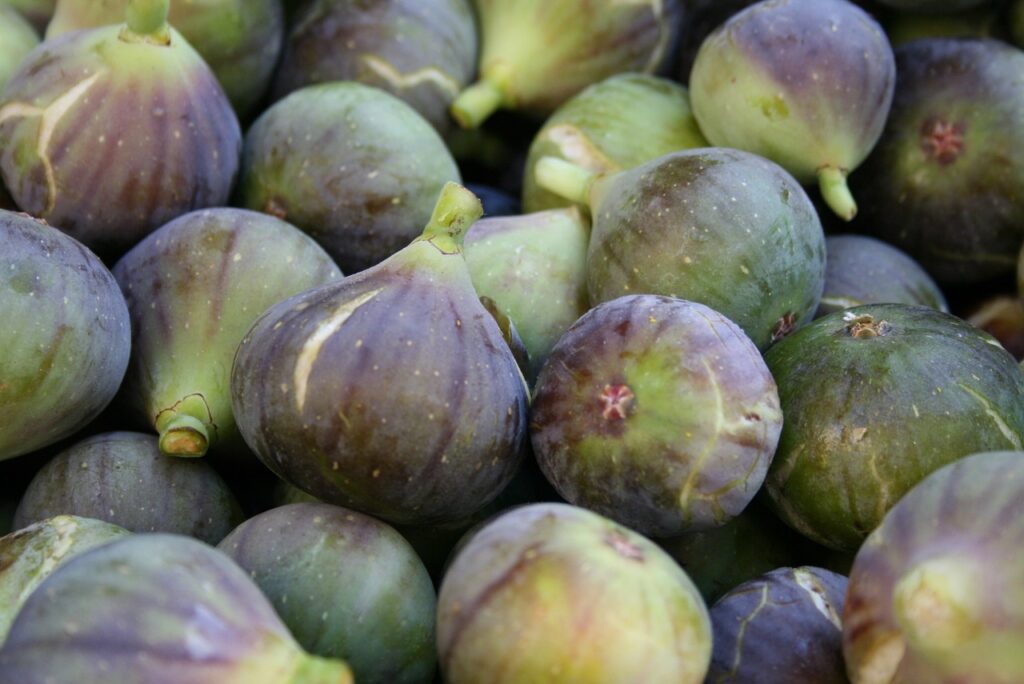Figs are delightful fruits with unique flavors and textures. They’re one of those versatile fruits that can be enjoyed fresh, cooked into recipes, or dried for snacking. But if you want to get the most out of your figs, it pays to know when they’re in season! Here’s what you need to know about when figs are at their peak so you can make the most of them while they last.
Figs are typically in season from late spring through early fall. Depending on your location, the exact timing of fig season can vary slightly. In some areas, you may start to see fresh figs as early as May or June, and they could stay available until October or November.
What Types Of Figs Are In Season?
The type of figs you can find in season also depends on your location. While most grocery stores carry the common types like Black Mission and Calimyrna figs, some areas may offer more unique varieties like Brown Turkey or Kadota.
In addition to these popular types, many other delicious options are available throughout their various harvest times. For example, Adriatic figs tend to peak in late summer, while Smyrna figs reach their peak in early fall.
What is unique about California figs?
California is one of the top producers of figs in the United States, and they’re known for their sweet flavor. The climate in California is perfect for growing a variety of different types of figs, from black mission to Kadota. This means you can enjoy the unique flavors and textures each type has to offer!
Can you buy fresh figs all year round?
Although you can find figs in stores all year round, they’re usually not fresh. Most of the time, these are dried figs that have been stored for longer than a year. If you want to enjoy the taste and texture of fresh figs, it’s best to wait until they’re in season – when their flavor is at its peak!
What are the benefits of fresh figs?
Figs are high in dietary fiber, which can help to regulate your digestive system. They also contain essential minerals and vitamins such as Vitamin A, B-complex, Calcium, and Iron that can support a healthy immune system. Plus, they’re delicious! You can use them in sweet or savory dishes – dried figs make a great snack, or you can use them to add sweetness and texture to salads, yogurts, and desserts. If you’re lucky enough to have access to a fig tree, keep an eye out for the small green fruits that will eventually ripen into sweet, tasty treats!
Why do some people prefer dried figs?
Dried figs are a great way to enjoy the flavor and health benefits of fresh figs year-round. They’re convenient, sweet, and easy to store – make sure you check the label for added sugars or preservatives. Dried figs can also be used in place of raisins or dates for baking recipes, as well as added to smoothies and other dishes for a boost of sweetness.
Do you have to eat a ripe fig?
Ripe figs are the sweetest and juiciest, but they don’t necessarily have to be eaten at their peak. If you don’t think you’ll be able to finish a whole batch of fresh figs before they go bad, try to dry them or make jam for long-term storage. You can also use unripe figs in recipes, such as adding them to salads for a hint of tartness.
Should fresh figs be refrigerated?
Yes, fresh figs should be refrigerated if you want to keep them for a few days. Please ensure the figs are stored in an airtight container or bag, so they don’t dry out. You can also freeze figs if you’d like to enjoy them later!
How do you make canned figs?
If you find yourself with many figs that need to be used up, canning (Fig jam) is an easy way to preserve them. Start by washing the figs in cool water and cutting off any bad spots or stems. Then peel the skin off each fig before boiling it in sugar syrup for 15 minutes or until tender. Finally, pack the cooked figs into jars with syrup and process in a hot-water bath for 30 minutes.
Can you eat a fig raw?
Yes, you can eat a fig raw! Raw figs have a sweet flavor that pairs well with many other ingredients. Try them in your salads or as an accompaniment to cheese and crackers for an easy appetizer. For the best nutritional benefits, choose organic options whenever possible.
How many figs a day should you eat?
There is no one-size-fits-all answer to this question, as it depends on your individual needs and goals. However, the general recommendation is that adults should eat around two servings of fruit a day – so you could enjoy up to two figs per day if you’d like!
Here is one of our recommendations: a black mission fig
Black mission figs are a popular variety of figs grown in California. Their season typically runs from late summer through early fall. They are known for their dark, purplish-black skin and sweet flavor. The flesh of the black mission fig is light pink to white with an edible seed inside.
These figs contain high amounts of dietary fiber, antioxidants, and vitamins A & B complex – making them a great snack or addition to any meal! Additionally, they can be used in both sweet and savory dishes like salads, yogurt parfaits, or even desserts such as cookies or cakes. Black mission figs are also relatively low on the glycemic index, which makes them a healthier option than some other sweets. Eating this type of dried fruit can provide you with essential nutrients while satisfying your sweet tooth!
Figs are a delicious, versatile fruit that can be enjoyed fresh or cooked into recipes. Knowing when figs are in season is key to getting the most out of them – usually from late spring through early fall. You can also buy dried figs all year round and even make canned figs if you have abundant fresh ones. Whether eating raw or cooked, eating two servings of fruit per day is recommended – which could include up to two delicious figs! For more information on how to enjoy figs at their peak, please read the rest of our content!









